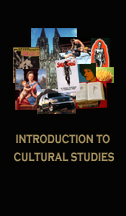unit six
Mythologizing Masculinity
professor's
outline & study guide for wright's essay on the structure of
myth and the structure of the western film
Overview of Wright's Essay on the Western:
Wright Draws on Saussure (semiotics) and Levi-Strauss (anthropology
of myth)
a) Task if to discover the underlying "grammar" of myth; the rules
and regulations which make it possible for myths to be meaningful.
b) Myths are structured in terms of BINARY OPPOSITIONS, categories
that divide the world into MUTUALLY EXCLUSIVE categories: culture/nature,
man/woman, black/white, good/bad, us/them, etc.
c) Social function of myth: makes the world explicable, magically
resolving problems and contradictions.
Some notes on POSTSTRUCTURALISM:
a) Poststructuralism rejects the (structuralist) notion that meaning
is generated and guaranteed by an underlying structure.
b) Meaning , rather, is always a process.
c) The problematic of a text relates as much to what it EXCLUDE
as what it INCLUDES.
d) To read a text symptomatically requires DOUBLE READING.
1. Double reading reads first the MANIFEST
TEXT (what is there) and then,
2. through the lapses, distortions, silences,
contradictions, and absences (the symptoms) in the manifest text,
reads the LATENT TEXT.
Will
Wright, "The Structure of Myth & the Structure of the Western Film"
in Cultural Theory and Popular Culture
I.)
The Structure of Myth
a) Myth is a communication from a society to its members.
b) Myths communicate a conceptual order c) Myth orders the everyday
experiences of its hearers/viewers
d) One reason for exhibiting the structure of myth is to discover
its social meaning. e) Myth is never simply the interaction of individuals
but rather of social principles represented by the characters.
f) A fight in a myth is never just a conflict of people, but is
a conflict of principles.
g) A character in a myth doesn't represent a concept because of
any inherent properties of the image, but because of the differences
between it and the character opposed to it.
1. Concepts are defined negatively by their
relations with other terms of the system. I am what I am Not. (Hot
is defined by being understood in opposition to cold).
2. Therefore, every symbol divides the world
into 2 sets: those things it refers to and those things it does
not.
h) The Western, structured in binary oppositions, presents a symbolically
simple but deep conceptualization of American social beliefs.
I) The classical Western includes 3 character types: a wandering
gun-fighter, a group of homesteaders, and a rancher.
1. These are presented as pairs of opposites:
gunfighter vs. homesteader = individual independence vs. social
domesticity; rancher vs. homesteader =selfish monetary values vs.
progress and communal values
2. This structure permits interaction of
social types
3. This structure prohibits the more realistic
and tragic situation of all 3 characters being equally good, equally
domestic, and equally opposed.
j) To understand social meaning of a myth, must analyze:
1. Binary structure-axes of opposition
2. Narrative structure-progression of events
and resolution of conflicts
II.) The Structure of the Western Film
a) The Classical Western Plot: The story of a lone stranger who
rides into a troubled town and cleans it up, winning the respect
of the townsfolk and the love of the schoolmarm.
b) Shane-summary and production information
c) Each film is the story of the hero who is somehow estranged from
his society but on whose ability rests the fate of that society.
The villains threaten the society until the hero acts to protect
and save it.
d) Three CHARACTER SETS/TYPES in Classical Western: the hero, the
society , and the villains.
e) 16 functions of the NARRATIVE STRUCTURE of the Classical Western:
1. The hero enters a social group.
2. The hero is unknown to the society.
3. The hero is revealed to have an exceptional
ability.
4. The society recognizes a difference between
themselves and the hero; the hero is given a special status.
5. The society does not completely accept
the hero.
6. There is a conflict of interests between
the villains and the society.
7. The villains are stronger than the society;
the society is weak.
8. There is a strong friendship or respect
between the hero and a villain.
9. The villains threaten the society.
10. The hero avoids involvement in the conflict.
11. The villains endanger a friend of the hero.
12. The hero fights the villains.
13. The hero defeats the villains.
14. The society is safe.
15. The society accepts the hero.
16. The hero loses or gives up his special status.
f) Four oppositions structure and are symbolically coded by the
film:
1. inside/outside opposition
2. good/bad opposition
A) as social vs. selfish motives
B) as nice vs. not-nice
3. strong/weak opposition
4. wilderness/civilization opposition
A) Definition of civilization:
having a concern with the money, tools, and products of American
culture; West vs. East distinction
g) Hero is the only character who is both good AND strong (Society
seen as weak). Opposition 4 (wilderness vs. civilization) makes
this possible. Because hero is associated with wilderness, all other
characters (even villains) are associated with civilization.


